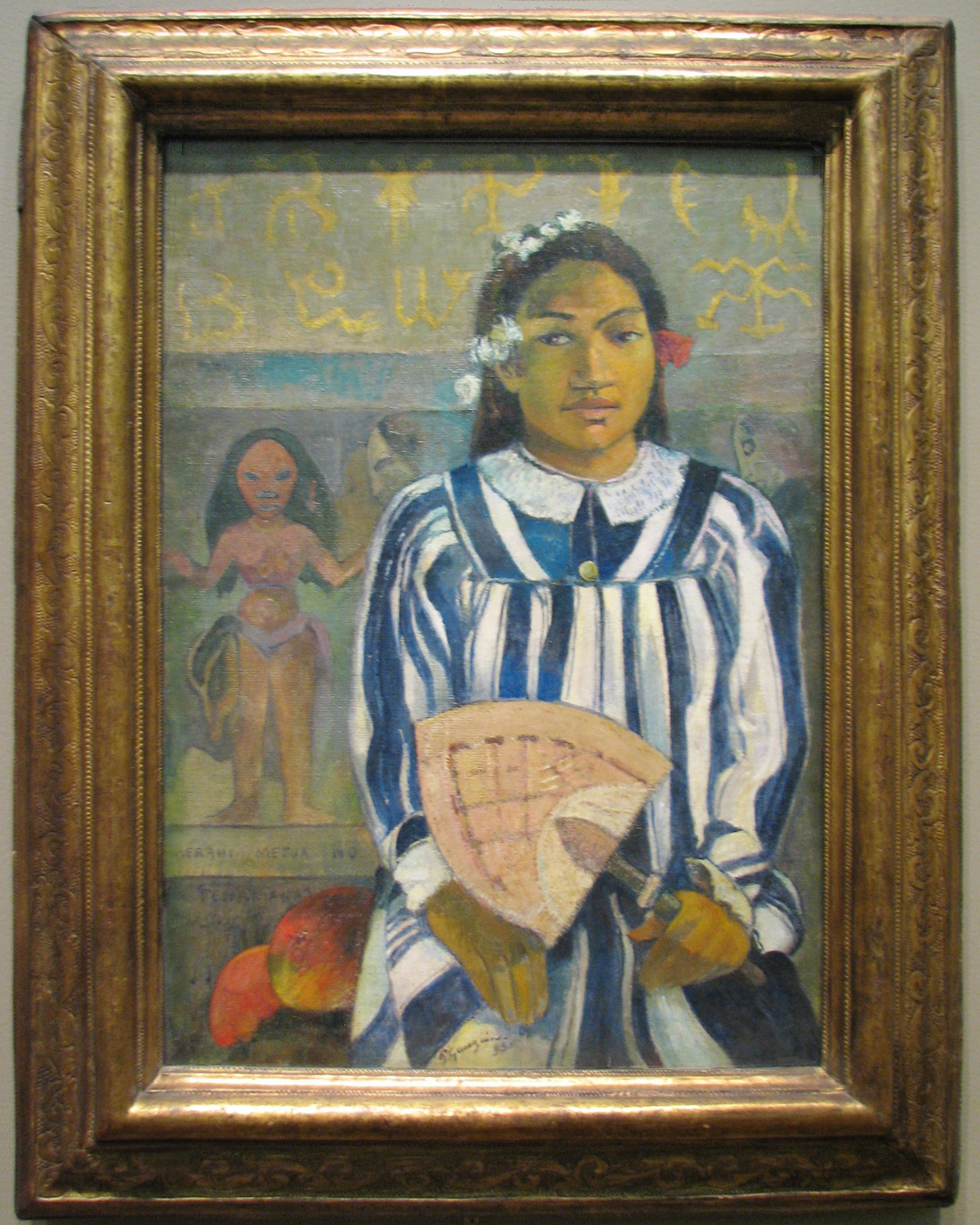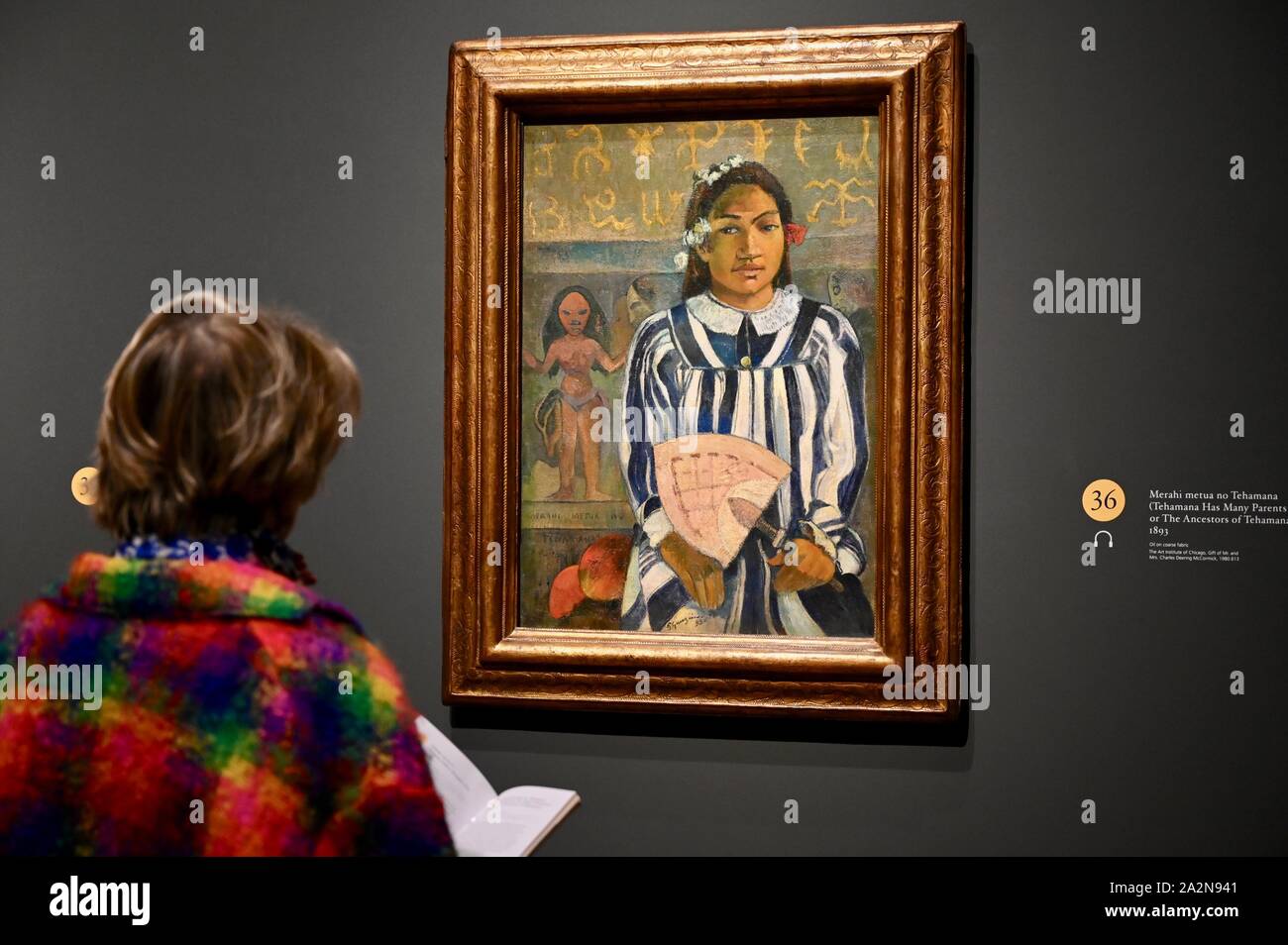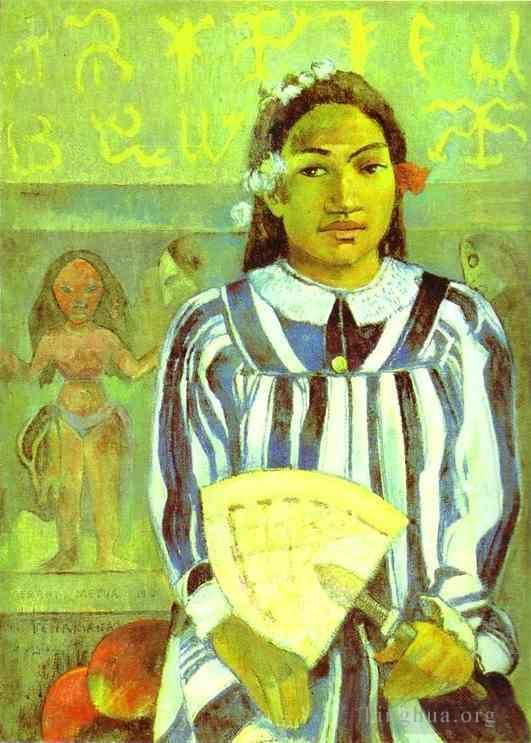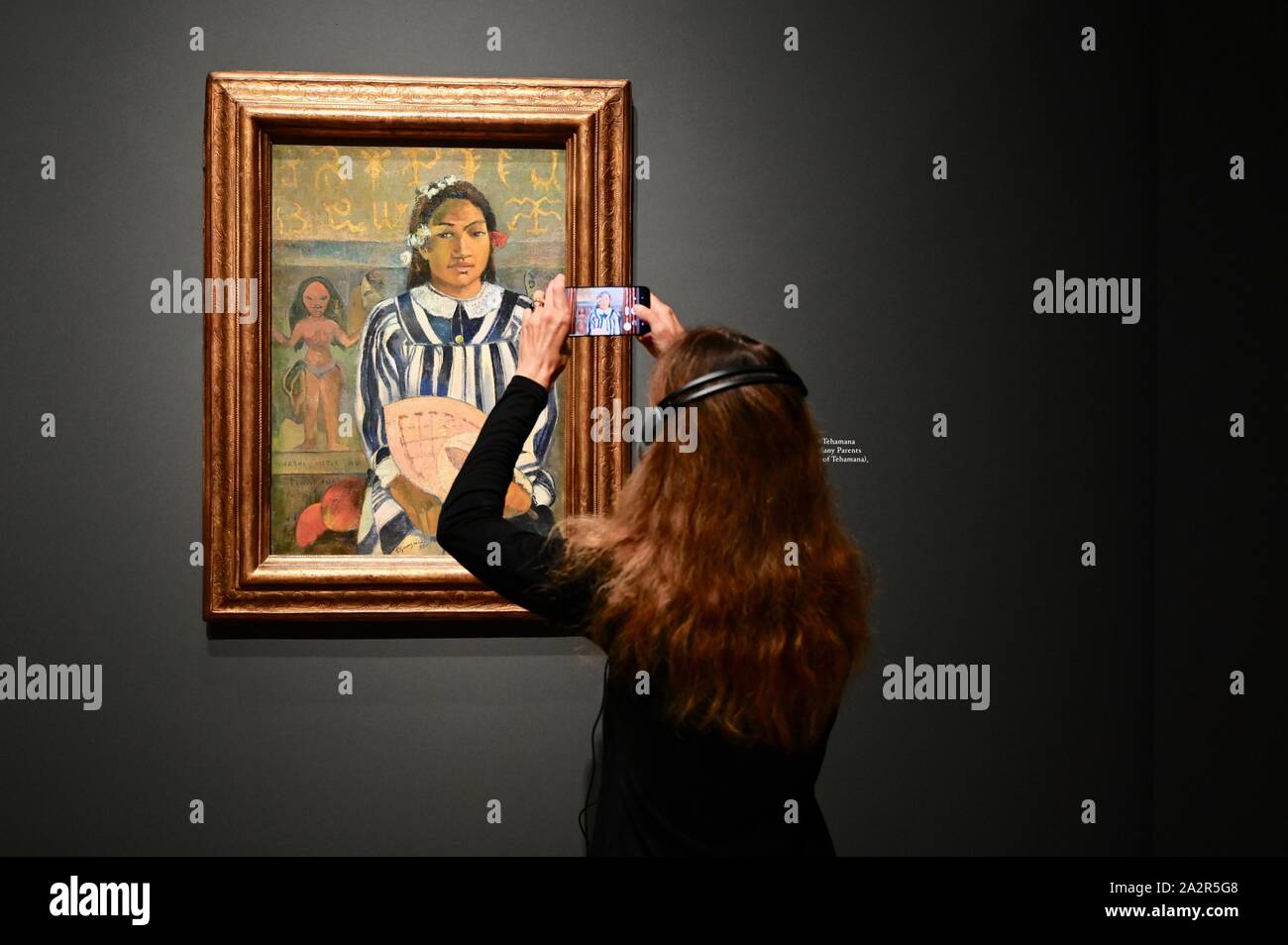Merahi Metua No Tehamana Images Free Photos, PNG Stickers, Wallpapers & Backgrounds rawpixel
The Tahitian title Gauguin inscribed on the canvas, "Merahi metua no Tehamana" (Tehamana Has Many Parents), refers to the local custom of sharing children between real and foster parents. He later adopted the French title "Les aïeux de Tehamana" (The Ancestors of Tehamana), which suggests the ancient belief that Tahitians descended from the union of the deities Ta'aroa and Hina.

Tehamana Has Many Parents or The Ancestors of Tehamana (Merahi metua no Tehamana) (1893) by Paul
Merahi metua no Tehamana painting by Paul Gauguin Upload media Wikipedia Instance of painting Main subject Teha'amana Depicts flower, Tahitians and hand fan Made from material oil paint canvas (painting support) Location Art Institute of Chicago, Chicago, Cook County, Illinois Creator Paul Gauguin Collection Art Institute of Chicago (1980-)

Gauguin at the Art Institute "Tehamana"
Merahi metua no Tehamana (Tehamana has many parents in English) is an 1893 painting in the Post-Impressionist style by the leading French artist Paul Gauguin. Gauguin painted this portrait of his thirteen-year-old companion and later wife during his first trip to Tahiti, from 1891-1893.

Art Reproduction Merahi metua no Tehamana Paul Gauguin Reproductions
Merahi metua no Tehamana ( Tehamana Has Many Parents or The Ancestors of Tehamana) 988 1893 Oil on jute canvas; 75 × 53 cm (29 1/2 × 20 7/8 in.) Signed and dated: P. Gauguin - / 93 (near center of bottom edge, in dark-blue paint) Inscribed: MERAHI METUA NO / TEHAMANA (lower left, in dark-blue paint)

Merahi metua no Tehamana (Tehamana Has Many Parents or The Ancestors of Tehamana) by Paul Gauguin
The young woman in Tehamana Has Many Ancestors (Merahi metua no Tehamana) became Gauguin's companion, and he painted Tehamana in the modest "Mother Hubbard" dress that was introduced to Tahitian women by missionaries. Nevertheless, the plaited fan and evocative images Gauguin placed on the wall vividly portray the perseverance of Tehamana's ancient heritage.

A woman views "Merahi metua no Tehamana". Gauguin Portraits. A Credit Suisse Exhibition, The
Teha'amana - symbols and intrigue Instead, he went on to paint scenes and figures based on personal experience and his rather limited circle of acquaintances among the local Tahitians. Only one painted portrait survives in which he names the sitter as Teha'amana, his young Tahitian lover.
+-+Print+on+Canvas.jpg)
Bungalow Rose Merahi Metua No Tehamana (Tehamana Has Many Parents Or The Ancestors Of Tehamana
In the painting 'Merahi metua no Tehamana', which in English can translate to either 'Tehamana Has Many Parents' or 'The Ancestors of Tehamana'), he paints his thirteen-year-old wife.

L’Œuvre à la Loupe Merahi metua no Tehamana de Gauguin Le blog d’art contemporain de KAZoART
Merahi metua no Tehamana (Tehamana Has Many Parents or The Ancestors of Tehamana) 1893 Paul Gauguin French, 1848-1903 In this portrait, the 13-year-old Tahitian girl named Tehamana appears stoic, shoulders squared and gaze unflinching. She wears a missionary dress and wields a Samoan fan as white flowers tumble from her hair.

Merahi metua no Tehamana Ancestors of Tehamana Paul Gauguin Oil Painting for Sale
Merahi metua no Tehamana (English Tehamana Has Many Parents or The Ancestors of Tehamana) is an 1893 painting by the French artist Paul Gauguin, currently in the collection of the Art Institute of Chicago. [1] The painting is a portrait of Paul Gauguin's wife Teha'amana during his first visit to Tahiti in 1891-1893.

Tehura. Noa Noa. Epreuve unique gravée d'après le tableau Merahi metua no tehamana de Paul
Image above: Paul Gauguin, 'The Ancestors of Tehamana or Tehamana Has Many Parents (Merahi metua no Tehamana),' (detail), 1893; The Art Institute of Chicago, Gift of Mr. and Mrs. Charles Deering McCormick 1980.613 ©The Art Institute of Chicago. Sponsored by. Exhibition highlights.

Merahi Metua No Tehamana the art institute of chicago Lustige Wallpaper
An 1893 oil on canvas, Merahi Metua no Tehamana ( Tehamana Has Many Parents or The Ancestors of Tehamana ), by Paul Gauguin (1848-1903) the French post-impressionist painter. Painted in Tahiti, one of the final works completed by the artist there during his first visit. Tehamana was the teenage girl Gauguin lived with.

Paul Gaugin Merahi Metua No Tehamana Exibition Poster
Merahi metua no Tehamana (English Tehamana Has Many Parents or The Ancestors of Tehamana) is an 1893 painting by the French artist Paul Gauguin, currently in the collection of the Art Institute of Chicago. The painting is a portrait of Paul Gauguin's wife Teha'amana during his first visit to Tahiti in 1891-1893.

Tehura. Noa Noa. Epreuve unique gravée d'après le tableau Merahi metua no tehamana de Paul
This is a painting about history. Polynesian and Pacific cultures first encountered by Europe in the 18th century had no written records, but Gauguin portrays Tahiti as a place with an intense.

A woman photographing "Merahi metua no Tehamana" on her mobile phone. Gauguin Portraits, A
Merahi metua no Tehamana (Tehamana Has Many Parents or The Ancestors of Tehamana) by Paul Gauguin Paul Gauguin traveled to rural France and then abroad in search of inspiration for his art.

Merahi Metua No Tehamana YouTube
Merahi metua no Tehamana (English Tehamana Has Many Parents or The Ancestors of Tehamana) is an 1893 painting by the French artist Paul Gauguin, currently in the collection of the Art Institute of Chicago. The painting is a portrait of Paul Gauguin's native wife Teha'amana during his first visit to Tahiti in 1891-1893.

Tehamana Has Many Parents or The Ancestors of Tehamana (Merahi metua no Tehamana) (1893) by Paul
An 1893 oil on canvas, Merahi Metua no Tehamana (Tehamana Has Many Parents or The Ancestors of Tehamana), by Paul Gauguin (1848-1903) the French post-impressionist painter. Painted in Tahiti, one of the final works completed by the artist there during his first visit. Tehamana was the teenage girl Gauguin lived with.